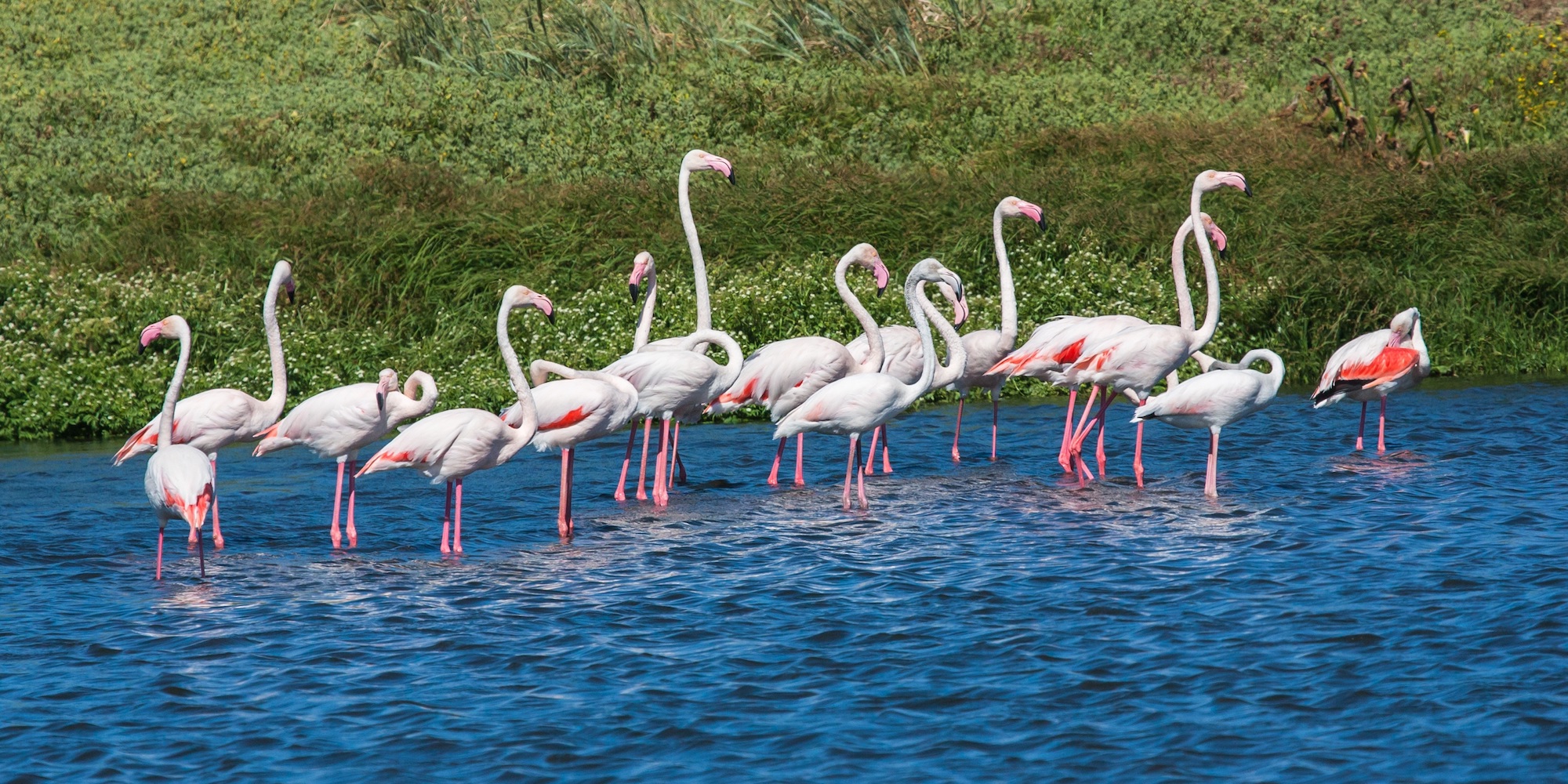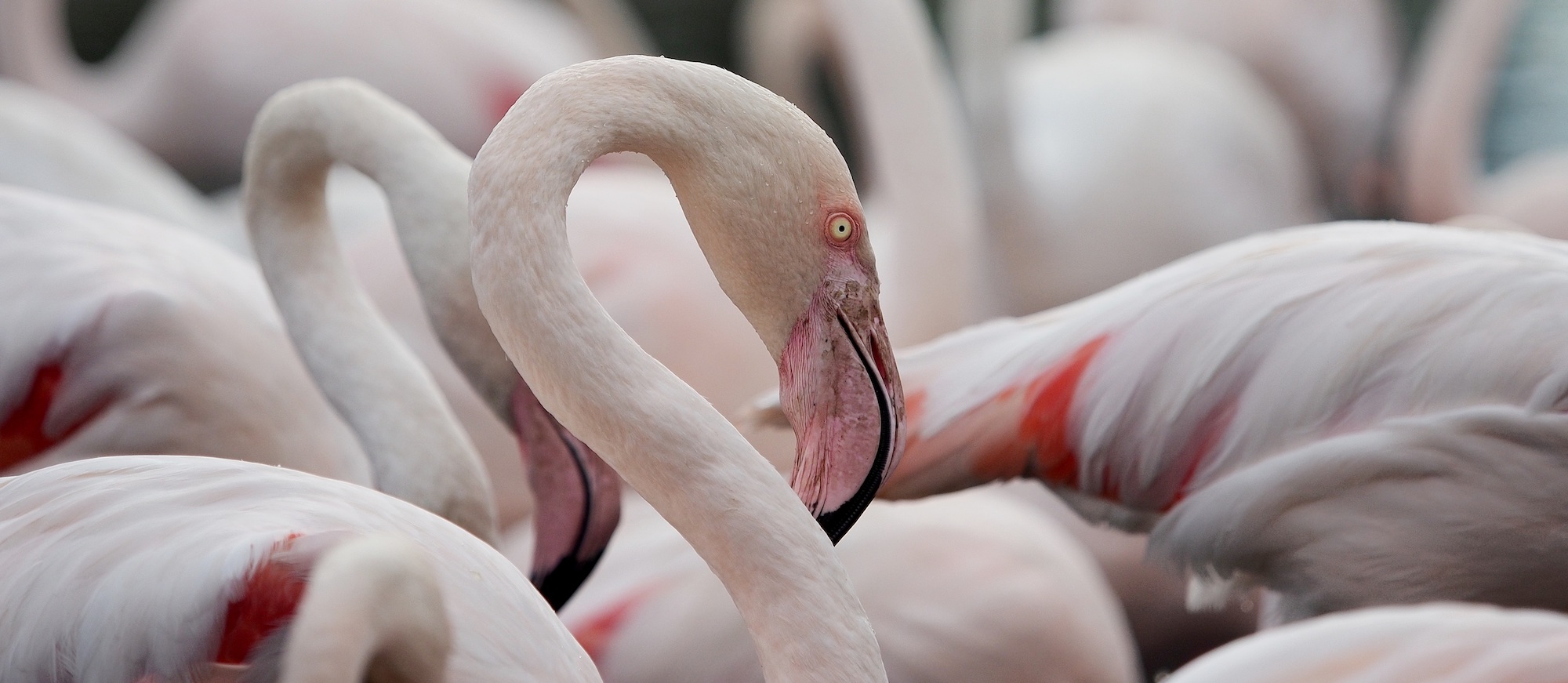Given Uganda’s equatorial location & abundance of fresh water, the density of wildlife in this country can make your head spin. There are (way) over 1000 confirmed bird species in the country alone. And what birds! Some of them look like actual runway models. We have already looked at some superb starlings & stunning sunbirds, today we meet the graceful Greater Flamingo (or Phoenicopterus roseus).

Birds of Fashion
The Greater Flamingo is the largest & has the most diversified habitat of all flamingo species (believe it or not there are 6 – but only two found on the African continent). Their coloring is an easy way to recognize them, African Greater Flamingos tend to be a soft pink & only the tip of their beak is dark in color. Generally speaking, the color of a flamingo’s plumage is due to their diet. The more pink shrimps & other critters containing carotenoids they eat, the darker pink they become. Thats why they vary in color so much when found in captivity.

Family Ties
Greater Flamingos tend to be gregarious & live in flocks or colonies. They are vulnerable when feeding, as they basically eat with their faces submerged, so large groups help protect individual members from natural predators (of which there aren’t many once mature). Even breeding is a social event, again as flocks offer more protection when vulnerable. Greater Flamingos are monogamous & mate for life. They build their nest together & take turns incubating. Although these great birds are not generally territorial, they aggressively defend their nests during nesting season.

Greater Flamingo Lifestyle
Greater Flamingos are omnivoreous filter-feeders using their highly-specialized beak to filter small critters & plant matter from the water (by pumping their tongue up & down). Their diet mainly consists of mollusks, plankton, crabs, shrimp, fish, insect larvae, seeds, shoots, decaying plant matter & algae.
These beautiful birds can live in a variety of saltwater habitats including saline or alkaline lakes, estuaries, coastal lagoons & mudflats. Although they drink fresh water (& are great swimmers) they don’t often congregate in it.

More Birdwatching
We are excited to embark on this fun new series of posts & can’t wait to share more about the amazing bird species that make up the diverse wildlife of Uganda. Stay tuned for more to come & in the meantime, perhaps you should come visit Uganda & meet some of them for yourself!






